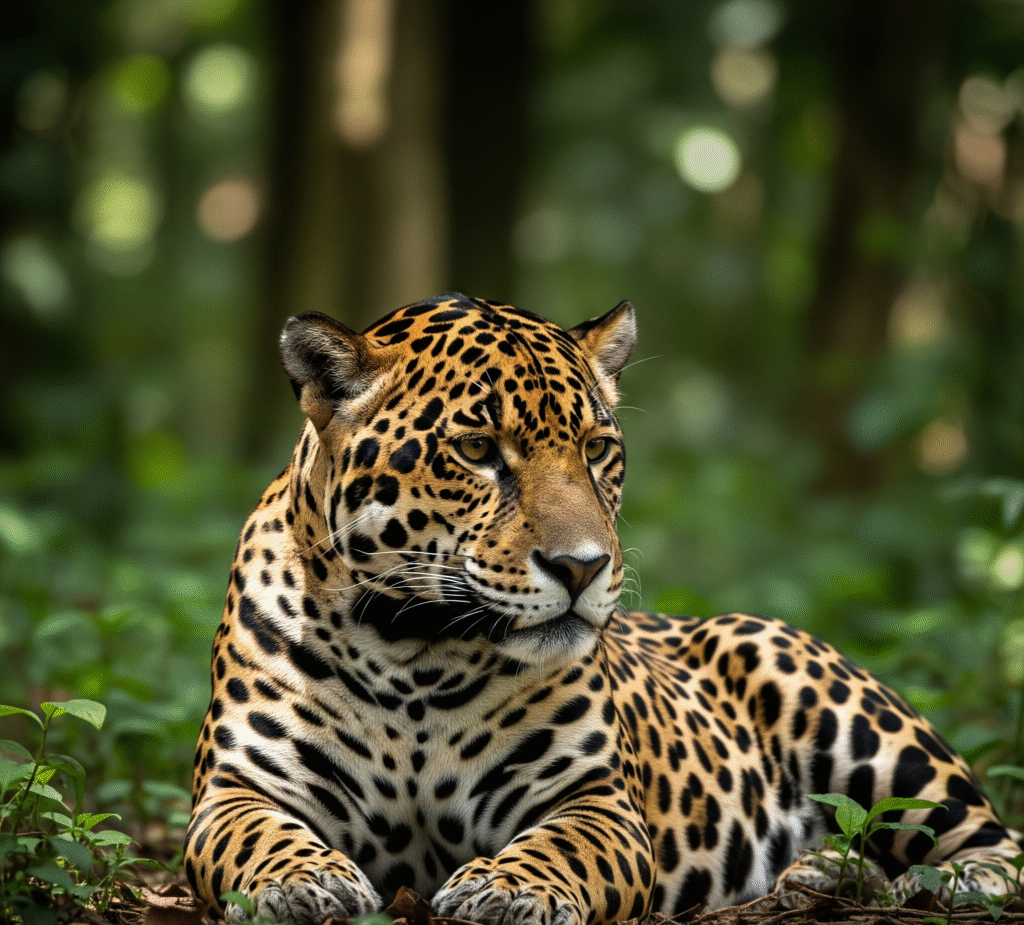Table of Contents

Introduction
How Fast Is a Jaguar? When it comes to the animal kingdom, speed often grabs our attention. From the lightning-fast cheetah to the soaring falcon, there’s something thrilling about animals built for speed. But have you ever wondered how fast a jaguar is? This magnificent predator, known for its stealth and strength, is often overlooked when it comes to the speed race—but it’s no slowpoke either. Let’s dive deep into what makes jaguars such incredible movers and how they measure up in the wild world of speed.
Overview of the Species
The jaguar (Panthera onca) is the largest big cat in the Americas and the third-largest in the world, right behind tigers and lions. Native to Central and South America, jaguars are apex predators that dominate their territories with a lethal combination of power, agility, and stealth.
Physical Traits That Contribute to Speed
Jaguars are muscular and compact. Their short, stocky limbs may not scream “sprinter,” but they’re perfectly designed for short bursts of speed and quick, agile movements through dense forests and wetlands.
How Fast Can a Jaguar Run
Average Speed of a Jaguar
On average, jaguars can run between 30 to 40 miles per hour (48 to 64 km/h). While this may seem slow compared to cheetahs, it’s important to remember jaguars are built for bursts, not marathons.
Top Speed Recorded
The top recorded speed of a jaguar hovers around 50 mph (80 km/h), but this is usually during very short chases—typically less than 100 meters. Jaguars rely more on stealth and strength than pure speed.
Acceleration Abilities
One thing jaguars excel at is acceleration. In the blink of an eye, they can lunge forward at breakneck speed, perfect for ambush-style attacks. Their powerful back legs give them incredible push-off power.
Comparison with Other Big Cats
Jaguar vs. Cheetah
Cheetahs are the undisputed champions of speed, clocking up to 70 mph. But they sacrifice power for that speed. Jaguars, in contrast, are far more muscular and capable of crushing bones with their bite—something cheetahs can’t do.
Jaguar vs. Leopard

Leopards, their African cousins, are similar in build and speed, but jaguars are generally stockier. Leopards can reach about 36 mph, putting them on par with jaguars.
Jaguar vs. Lion
Lions, though larger, can sprint up to 50 mph. However, their stamina is low, just like the jaguar’s. Jaguars tend to rely less on group hunting, needing to depend more on their own short-burst speed and ambush skills.
Anatomy of Speed
Muscle Structure
Jaguars are walking muscle machines. Their shoulders and haunches are packed with fast-twitch muscle fibers—perfect for explosive movements.
Limb Design and Paw Strength
Short, powerful limbs and large paws give them strong ground contact and incredible pouncing abilities. They’re also excellent climbers and swimmers.
Aerodynamic Body Shape
Unlike cheetahs that are built for the plains, jaguars are slightly bulkier, making them better adapted for sudden bursts in complex environments like jungles.
The Role of Speed in Hunting
Ambush Tactics vs. Long Chases
Jaguars prefer ambush over chasing. They stalk quietly and then explode into action when prey is within reach. Speed is essential—but only in those critical few seconds.
Real-Life Hunting Scenarios
Imagine a jaguar leaping from the shadows to snatch a caiman or pouncing on a capybara from thick brush. In these moments, speed and silence merge into one deadly move.
How Speed Increases Survival
Without the ability to move swiftly, jaguars would struggle to catch fast-moving prey or escape unexpected threats. Their survival is tightly linked to this burst-capacity.
Habitat and Its Effect on Speed
Dense Jungle vs. Open Terrain
Jaguars live in rainforests, swamps, and thick jungle—not exactly ideal for long chases. Their speed is adapted to dart through tight spaces and leap across rivers.
Adaptations to Environments
Their coloration camouflages them, their paws soften their steps, and their reflexes allow for instant reaction—ideal for forest hunting.
Evolutionary Background
Why Jaguars Didn’t Evolve for Extreme Speed
Unlike cheetahs, jaguars didn’t evolve in wide open savannas. Their strength-based predation needed quick acceleration, not long sprints. Hence, evolution favored stealth and raw power over top-end velocity.
Speed vs. Strength Evolution Balance
The jaguar is nature’s example of the perfect middle ground. Not the fastest, not the strongest—but strong enough and fast enough to dominate.
Speed in Captivity vs. Wild
Differences in Behavior and Performance
Captive jaguars don’t need to chase food. Their speed is less practiced, and they may be heavier due to less exercise.
Influences of Environment and Health
A wild jaguar, lean and active, will always be faster than a zoo counterpart. Environment and diet play massive roles in performance.
Myths and Misconceptions
Are Jaguars Faster Than Cheetahs?
Nope! But they’re still impressively fast. Cheetahs win the race, but jaguars win in power-packed agility.
Media Exaggerations
Some documentaries exaggerate jaguar speed for drama. While they are fast, they’re not built to run down gazelles across open fields.
Human Perspective on Jaguar Speed
Importance in Culture and Symbolism
In ancient cultures, especially the Maya and Aztec, jaguars were symbols of strength, stealth, and speed.
Role in Documentaries and Wildlife Research
Researchers marvel at how these cats vanish and reappear in a flash. Speed makes them elusive and mysterious—perfect for TV legends.
Technological Measurement of Speed
GPS Collars and Motion Sensors
Modern collars and high-speed cameras now help researchers track jaguar movement more accurately than ever.
Challenges of Measuring Wild Jaguars
Dense forests, unpredictable movement, and nocturnal habits make it hard to gather consistent speed data in the wild.
Fun Facts About Jaguars
Speed-Related Trivia
- A jaguar can leap 10 feet in one bound!
- They can climb trees and launch from them like furry missiles.
Unexpected Facts About Their Movement
- Jaguars love water and are strong swimmers—making them fast on land and in rivers.
Conservation and the Future of the Jaguar
Threats Affecting Natural Behavior
Deforestation, poaching, and habitat loss reduce their range—and therefore their opportunities to exercise natural speed.
Why Protecting Speed Means Protecting Ecosystems
Keeping jaguars healthy and fast means protecting entire ecosystems. They’re top predators who balance the food chain.
Conclusion
So, how fast is a jaguar? Not the fastest cat out there, but definitely one of the most powerful movers in the jungle. With speeds reaching up to 50 mph in short bursts, jaguars use stealth, strength, and explosive acceleration to dominate their environments. Their speed is a key weapon—but it’s the combination of traits that makes them truly majestic.

Pingback: 2 Facts About Timber - sugrina
Pingback: Unbelievable the Largest Animal in the World - 𝒮𝓊𝑔𝓇𝒾𝓃𝒶